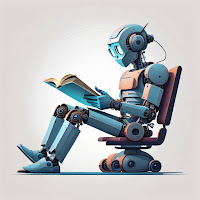Studying the emerging trends in higher education, the salient ones include the rise of blended and hybrid models, along with better integration of learning management systems; greater emphasis on diversity and inclusion, as in student mental health, including accommodations and personalized learning; a shift towards competency-based learning, focusing on skill mastery rather than old-fashioned classroom learning; more simulations; learning from anywhere; more formative assessment replacing high stakes testing; and greater emphasis on life-long learning and upskilling. With the fast rate of technological advancement, along with the disruption it is causing in most jobs, upskilling and life-long learning are playing a more central role in higher education; they are no longer marginal matters, and universities are paying more attention to continuing education. The offerings beyond the regular degree programs are expanding; many are designed to develop the knowledge and skills needed by individuals and firms to remain competitive in a rapidly changing economy. Alumni are being invited back to their institutions to upgrade their qualifications. A teacher, for example, may take courses on emerging applications of artificial intelligence in education. Short, specialized courses are likely to multiply, as are certificate programs. Micro-learning will become more popular with busy professionals, including possibilities for micro-credentials that certify the learning outcomes of short courses or training.
While digital and technical skills
will be in greater demand, so will soft skills. Critical thinking, communication, collaboration, and adaptability will become part
and parcel of curricula across the disciplines. Educational programs will seek to develop well-rounded individuals ready with the interpersonal skills required for success in the fast-evolving job market. High school transcripts are being
re-defined in preparation for higher education and a rapidly changing world. The
International School of Geneva has been particularly creative with its “Learner
Passport”. Its website states that its new transcripts give a better idea to
universities on applicants’ strengths as traditional transcripts, personal
statements, and recommendations do not recognize “creativity, thinking across subjects, developing
responsibility and citizenship that has been a core part of every child’s
education ….” It emphasizes that universities
need a broader picture that portrays the breadth and depth of a high-quality education. Its learner passport provides credit
for both curricular and extra-curricular activities, reflecting global
competence. Working with UNESCO, this school identified seven global
competencies including “knowledge, skills, and attitudes” empowering global
citizens to contribute to a better world: life-long learning; self-agency;
interactively using diverse tools and resources; interacting with others;
interacting with the world; multi-literateness; and trans-disciplinarity. Among
those competencies, the definition of multi-literacies is striking. Students take
note: reading, writing, and numeracy are not enough. Here is the complete list
of literacies as indicated by the school:
· Reading
· Writing
· Numeracy
· Digital literacy
· Data literacy
· Technological literacy
· Coding
· Media literacy
· Financial literacy
· Cultural literacy
· Health literacy
The future of quality higher education appears to be one of blended learning, capitalizing on the physical presence of institutions while imparting engaging, personalized online learning, possibly enhanced by AI. In parallel, and with a fast-changing labour market, short courses and micro-credentials will proliferate, along with continuing education courses for an ageing population. Soft skills and multi-literacies will be in demand.














.jpg)



